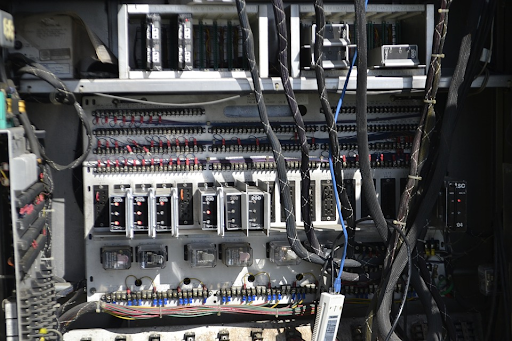Different Types of Analog Sensors & How To Choose One

Process sensors measure physical quantities like pressure, temperature, and flow. These measurements are transmitted to control systems via some form of electrical signal. While many sensor interface types exist — digital start/stop, fieldbus variations, synchronous serial interfaces, and more — simple analog signals remain the standard transmission style for linear position sensors and industrial automation systems. Roughly two-thirds of all sensors sold still use analog outputs.
Most analog instruments will utilize one of two signal types: analog voltage (0 - 10 V or sometimes 0 - 5V), or analog current (typically 4 - 20 mA). Other signal ranges (such as 2 - 10V or 0 - 20mA) are possible, but these are far less common.
So given the option, which should you choose? Let’s take a look at the pros and cons of each of the dominant analog signal types.
Differences Between 4 - 20mA, 0 - 10 V, and 0 - 5V Outputs
The 0 - 10 V and 0 - 5V outputs use analog voltage to transmit measurements. This is straightforward, since sensors naturally generate outputs in the form of voltage.
With a 4 - 20mA sensor, there is an additional step. The voltage is sent to a transmitter (affixed to the sensor), which must then convert the voltage signal into a current signal. Calibration of the transmitter then sets the range of the current signal to be generated. Once the signal reaches the process monitor or controller, this current must be converted back into a voltage output (with a load resistor) for measurement purposes.
Why go through this additional process? Well, let’s take a look at the advantages and disadvantages of each of the analog signal types.
Voltage: 0 - 10 V (and 0 - 5V)
The voltage range represents a variable signal. As the simplest and most basic method of analog signal transmission, 0 - 10 V is commonly seen and used throughout HVAC applications. Automation Insights once likened it to “vanilla ice cream” or the “Chevy Cavalier” of analog signal types. It does the job, is easy to troubleshoot, and nearly all industrial controllers will accept voltage signals.
However, there are inherent drawbacks:
- Voltage signals are highly susceptible to electrical noise and interference.
- The sensor will require a third wire to supply power to the instrument (separately from the two signal wires).
- Long cable distances create drops in voltage that result in reduced accuracy.
- A 0V value does not distinguish between a zero measurement value and no signal. Therefore, a sensor fault cannot easily be detected.
Current: 4 - 20mA
Current signals in the 4 - 20mA range have grown much more common over the last decade. Even though they require conversion of voltage to current (and back to voltage again at the controller), they are often more reliable and convenient for many reasons:
- Current is much less vulnerable to noise, interference, or voltage drop.
- Only two wires are required. Since there will always be at least 4mA flowing through the loop, your instrument can be “loop-powered” (using the same two wires that transmit signals).
- A long cable run will not affect the accuracy of a current signal.
- Faults are easily detected. A reading of 0mA indicates no signal, whereas 4mA represents a zero value measurement.
Which Types of Electrical Signals Should My System Use?
Both voltage and current analog signal types are common outputs in process control instruments. For many applications, there is now a wider selection of 4 - 20mA instruments and equipment than for 0 - 10V. If you’re using analog signals, we’d generally recommend using 4 - 20mA unless your automation equipment is not able to accept current signals. Many industries — from process controls to manufacturing, aerospace, and automotive — benefit from the convenience of a high accuracy 2-wire connection.
Veris Industries offers you the versatility to choose the output type that works best with the rest of your system. All of our sensors are fitted to be flexible and polarity insensitive, with two-wire 4 - 20 mA or 3-wire 0-5/0-10 V versions available. You can save time in the field and stock fewer devices with highly customizable sensors that are compatible with all three common signal ranges.





